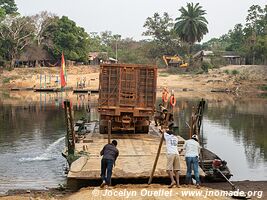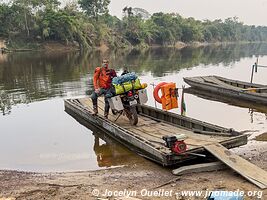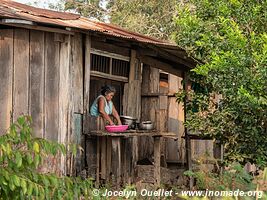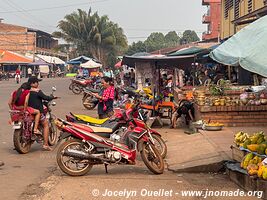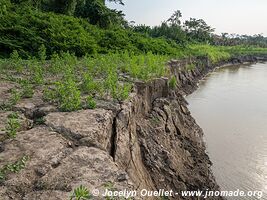The far north of Bolivia
The far north of Bolivia was interesting despite the oppressive heat, humidity and dust on the roads. With temperatures hovering around 35 degrees Celsius, it was very painful to go on short hikes, or even just to go to the market in a town. Nevertheless, here are some places I liked.
Trail from Guayaramerín to Cahuela Esperanza
The trail to Cahuela Esperanza is nicknamed the Ruta de la Goma or the rubber road. I enjoyed the barge crossing of the Yata River.
Each barge is specific to a type of vehicle. I couldn't cross at the same time as the truck and had to use the small motorbike barge...
Cahuela Esperanza
This village was once the centre of the empire of Bolivian tycoon Nicolás Suárez Callaú, who made his fortune during the so-called Amazon rubber boom.
The rubber boom was an important period in the history of countries with Amazonian lands, such as Brazil, Bolivia, Peru, Colombia and Ecuador. The extraction and commercialization of rubber brought great wealth to the region, but also many social and environmental transformations. Several cities in the Amazon developed greatly during this period, such as Iquitos in Peru, Belém do Pará and Manaus in Brazil. The rubber fever reached its peak between 1879 and 1912.
In 20 years, the tycoon Nicolás Suárez Callaú managed to control 60 percent of Bolivia's rubber production. In a territory of 64,000 km2 stretching from Cobija to Guayaramerín, more than 2,000 employees supervised thousands of seringueros (latex collection worker). This entrepreneur was extremely wealthy and owned 50,000 head of cattle and six steamships. After the end of the rubber boom, his empire began to decline and eventually disappeared completely around 1940. The decline began with the competition from Asia and then the invention of synthetic rubber.
Today, it is still possible to see old buildings reflecting the past glory and wealth of Cahuela Esperanza, but unfortunately, everything is abandoned and the government does nothing to preserve the history of the village. The villagers today seem to be poor and live in dilapidated houses.
Riberalta
Tumichucua
I spent a few days in Tumichucua to relax and canoe on Lake Tumichucua. The area is beautiful and with the lake, the ambient temperature is more tolerable.
In the village, I stayed with a local family, in the room of a child who is now an adult and has left the family nest.






